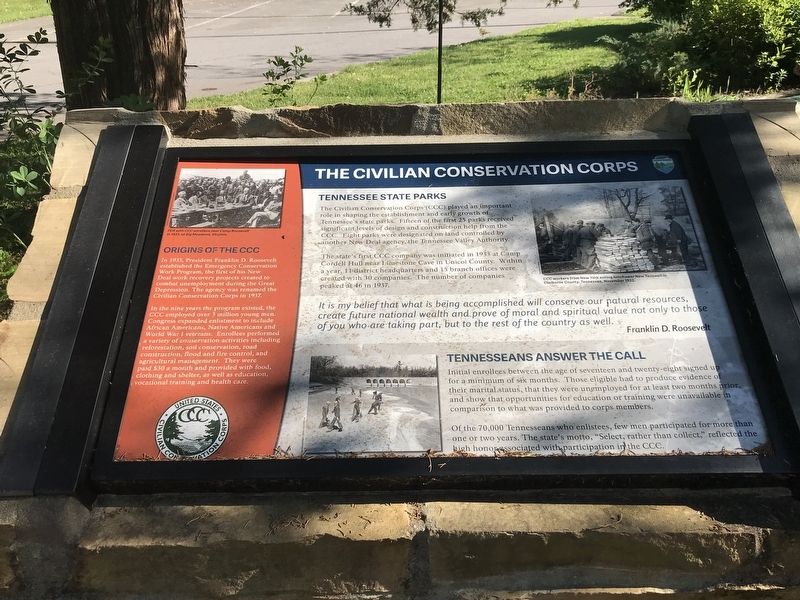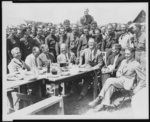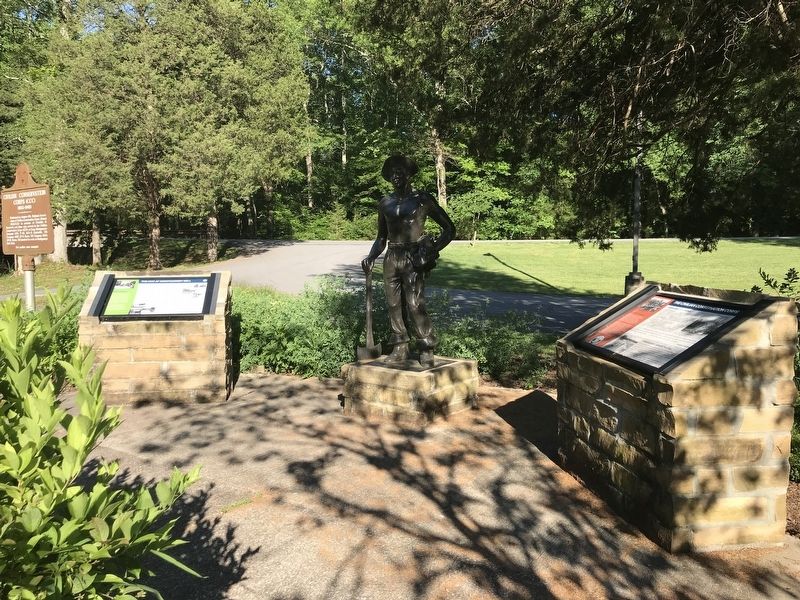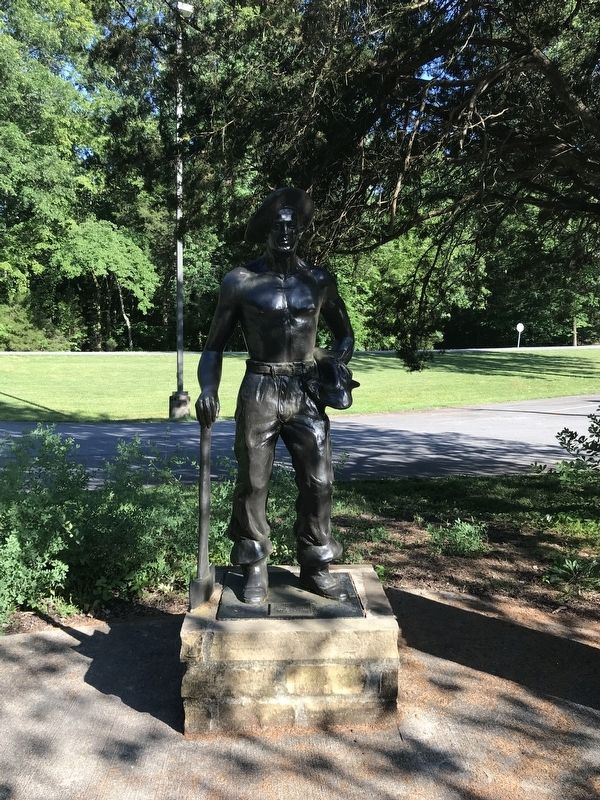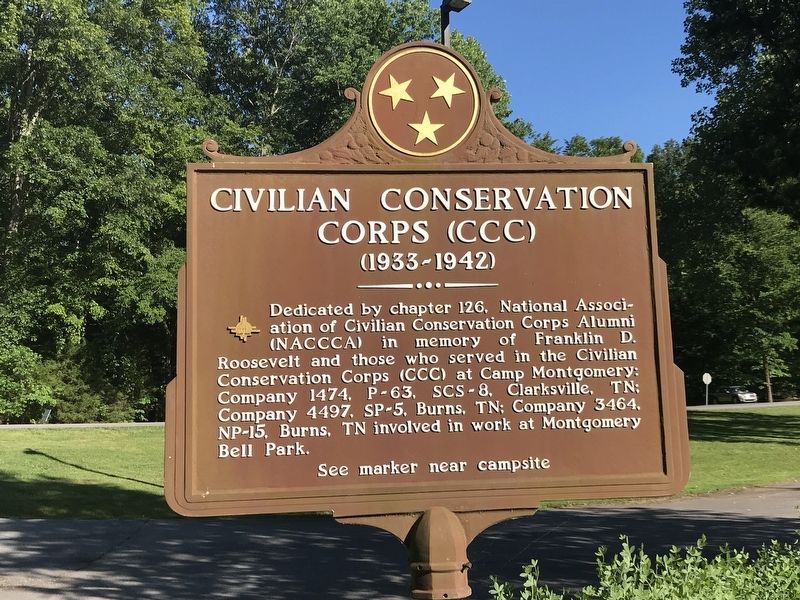Near Burns in Dickson County, Tennessee — The American South (East South Central)
The Civilian Conservation Corps
The Civilian Conservation Corps (CCC) played an important role in shaping the establishment and early growth of Tennessee's state parks. Fifteen of the first 25 parks received significant levels of design and construction help from the CCC. Eight parks were designated on land controlled by another New Deal agency, the Tennessee Valley Authority.
The state's first CCC Company was initiated in 1933 at Camp Cordell Hull near Limestone Cave in Unicoi County. Within a year, 11 district headquarters and 15 branch offices were created with 30 companies. The number of companies peaked at 46 in 1937.
It is my belief that what is being accomplished will conserve our natural resources, create future national wealth and prove of moral and spiritual value not only to those of you who are taking part, but to the rest of the country as well.
— Franklin D. Roosevelt
Initial enrollees between the age of seventeen and twenty-eight signed up for a minimum of six months. Those eligible had to produce evidence of their marital status, that they were unemployed for at least two months prior, and show that opportunities for education or training were unavailable in comparison to what was provided to corps members.
Of the 70,000 Tennesseans who enlisted, few men participated for more than one or two years. The state's motto, “Select, rather than collect,” reflected the high honor associated with participation in the CCC.
[Sidebar]
In 1933, President Franklin D. Roosevelt established the Emergency Conservation Work Program, the first of his New Deal work recovery projects created to combat unemployment during the Great Depression. The agency was renamed the Civilian Conservation Corps in 1937.
In the nine years the program existed, the CCC employed over 3 million young men. Congress expanded enlistment to include African Americans, Native Americans and World War I veterans. Enrollees performed a variety of conservation activities including reforestation, soil conservation, road construction, flood and fire control, and agricultural management. They were paid $30 a month and provided with food, clothing and shelter, as well as education, vocational training and health care.
Erected by Tennessee State Parks.
Topics and series. This historical marker is listed in these topic lists: Charity & Public Work • Parks & Recreational Areas
. In addition, it is included in the Civilian Conservation Corps (CCC), and the Former U.S. Presidents: #32 Franklin D. Roosevelt series lists. A significant historical year for this entry is 1933.
Location. 36° 6.074′ N, 87° 17.085′ W. Marker is near Burns, Tennessee, in Dickson County. Marker can be reached from Jackson Hill Road. Marker is located in Montgomery Bell State Park visitor center parking lot. Touch for map. Marker is at or near this postal address: 1020 Jackson Hill Road, Burns TN 37029, United States of America. Touch for directions.
Other nearby markers. At least 8 other markers are within 4 miles of this marker, measured as the crow flies. The CCC at Montgomery Bell (here, next to this marker); Birth of a Church (about 600 feet away, measured in a direct line); The Old Log House (approx. 0.8 miles away); Cumberland Presbyterian Church Monument (approx. 0.8 miles away); The Civilian Conservation Corps and Montgomery Bell State Park (approx. 1.4 miles away); McNairy’s Attack (approx. 2 miles away); The Civil War in White Bluffs (approx. 3.4 miles away); "Lonesome" Cabin (approx. 4 miles away). Touch for a list and map of all markers in Burns.
More about this marker.
[Caption:] CCC workers from New York eating lunch near New Tazewell in Claiborne County, Tennessee, November 1933.
Credits. This page was last revised on June 16, 2020. It was originally submitted on June 16, 2020, by Duane and Tracy Marsteller of Murfreesboro, Tennessee. This page has been viewed 252 times since then and 19 times this year. Photos: 1, 2, 3, 4, 5. submitted on June 16, 2020, by Duane and Tracy Marsteller of Murfreesboro, Tennessee. • Devry Becker Jones was the editor who published this page.
